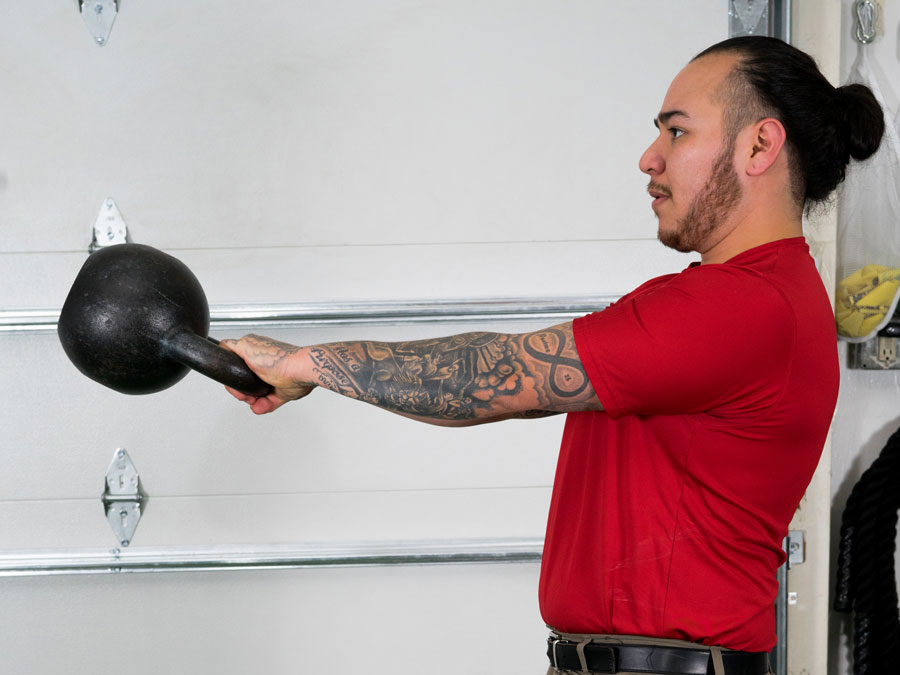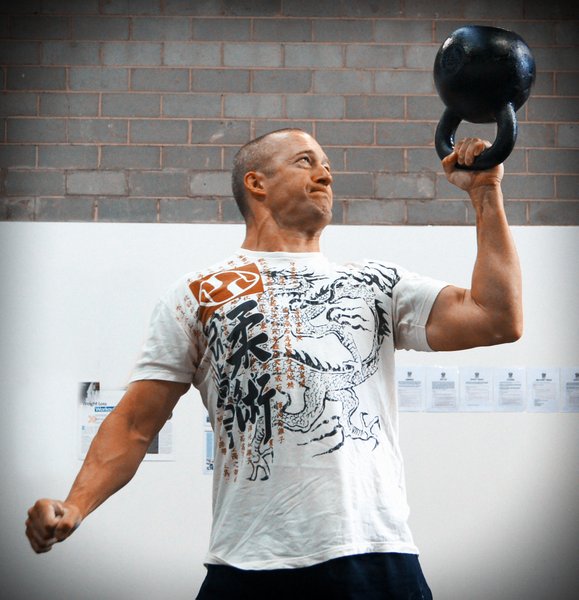
We commonly coach our clients to create tension with cues such as “brace the core”, “tighten the glutes”, “crush the handle”, etc. These phrases can help get clients to create tension in their lifts. You may see the specific group of muscles tighten, or a change in your client’s face when you ask them to create more tension.
Deconditioned clients are often unable to create tension through a specific area at first. It’s important that we spend time teaching them certain drills and use different cues to help them find the ability to create tension. It can be challenging to teach people how to apply tension during a lift.
Why Reinforcing Tension is an Important Skill to Practice and Teach:
Tension Keeps You Safe
Ballistic movements like the kettlebell swing require that we move rapidly—and if the movement is done incorrectly it can lead to injury. Kettlebells are not unsafe tools—users with bad technique are unsafe. Placing an emphasis on stressing the muscle with tension will allow you and your clients to work on technique without irritating the joints as much.
Tension Builds Strength
Your muscles recognize tension, not load—this is why we should focus on contracting the muscle before and during the exercise. Using “time under tension” (TUT), you can stimulate the muscle for greater growth. The denser the muscle, the stronger the body. Producing more tension throughout your lifts can also help generate more force.
Tension Stimulates Muscle Growth
Creating mechanical tension is one the of the primary factors associated with muscle growth. Mechanical tension is created by stressing the muscle throughout its full range of motion during an exercise. The phrase “time under tension” (or ‘TUT’ as referenced in the paragraph above) relates to the amount of time we’re stressing the muscle during an exercise. The more tension created during an exercise, the more muscle that will be recruited to perform the task. In turn, this gives the muscle a greater growth stimulus.
Drills That Teach How to Create and Reinforce Tension:
Hardstyle Plank
The RKC Hardstyle plank is the traditional plank’s older, much cooler brother. While a traditional plank is good for teaching a client to engage or brace their core, the client can still perform it poorly or fall short of the correct amount of tension we are looking to create. The Hardstyle plank creates a lot more tension than a regular plank. Most regular planks are held for 30 seconds or more, but the more intense Hardstyle plank is held for a much shorter amount of time maximizing the body’s full strength potential.
How to perform the Hardstyle Plank:
Isometrics
During isometric exercises, the muscle tenses but its length remains the same. A good example of an isometric exercise is an RKC drill we use to help pry open the hips. We place the client in the bottom position of a kettlebell goblet squat, then ask them to create a great amount of tension while forcing “prying” the hips out—all while keeping the hips in place. This powerful drill can help your clients find their glutes while understanding the amount of tension they need to create at the top position of their squat.
How to Perform an Isometric Hip Prying Drill
Time Under Tension
Time under tension is one of the greatest tools for helping our clients create or reinforce tension. Coach the client through a “grind” exercise—such as a kettlebell press—during a set amount of time. The kettlebell press can be performed and progressed in many ways, though most people will immediately want to just increase the weight. But, if we apply “time under tension” to the kettlebell press, we can make a lighter kettlebell feel far heavier. This can help a client spend more “time under tension” while safely finetuning their technique.
The Time Under Tension Kettlebell Press
****
William Sturgeon, RKC II trains clients at his gym, Restored Strength. Contact him through his website at RestoredStrength.com or follow him on Facebook: facebook.com/restoredstrength
